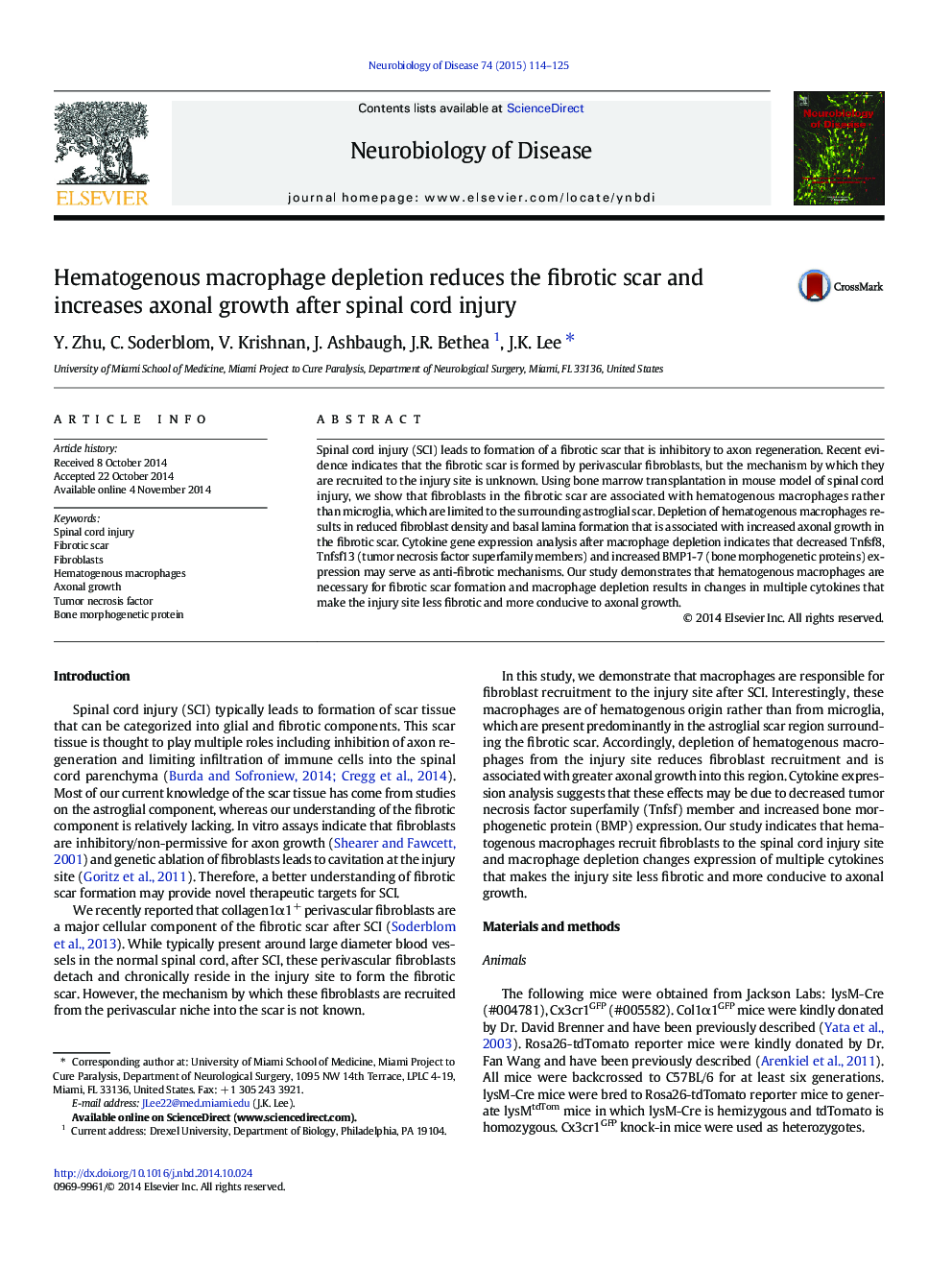| Article ID | Journal | Published Year | Pages | File Type |
|---|---|---|---|---|
| 6021752 | Neurobiology of Disease | 2015 | 12 Pages |
•Fibrotic scar is associated with hematogenous macrophages, whereas microglia occupy the astroglial scar•Hematogenous macrophage depletion reduces the fibrotic scar and promotes axonal growth•Macrophage depletion leads to decreased pro-fibrotic Tnfsf8 and Tnfsf13 as well as increased anti-fibrotic BMP1-7•Macrophage depletion changes multiple cytokines that make the injury site less fibrotic and more conducive to axonal growth
Spinal cord injury (SCI) leads to formation of a fibrotic scar that is inhibitory to axon regeneration. Recent evidence indicates that the fibrotic scar is formed by perivascular fibroblasts, but the mechanism by which they are recruited to the injury site is unknown. Using bone marrow transplantation in mouse model of spinal cord injury, we show that fibroblasts in the fibrotic scar are associated with hematogenous macrophages rather than microglia, which are limited to the surrounding astroglial scar. Depletion of hematogenous macrophages results in reduced fibroblast density and basal lamina formation that is associated with increased axonal growth in the fibrotic scar. Cytokine gene expression analysis after macrophage depletion indicates that decreased Tnfsf8, Tnfsf13 (tumor necrosis factor superfamily members) and increased BMP1-7 (bone morphogenetic proteins) expression may serve as anti-fibrotic mechanisms. Our study demonstrates that hematogenous macrophages are necessary for fibrotic scar formation and macrophage depletion results in changes in multiple cytokines that make the injury site less fibrotic and more conducive to axonal growth.
